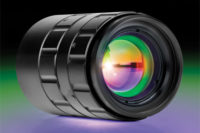CINCINNATI-ASTM E2001-8 Standard Guide for Resonant Ultrasound for Defect Detection in Both Metallic and Non-Metallic Parts has been revised and released. Standardizing resonant inspection nondestructive testing across different organizations, companies and countries to be able to have meaningful comparison and consistency for the technique is the express purpose of the new standard.
ASTM E2001-8 allows companies to more easily specify resonant inspection as a standardized technique and be assured that regardless of the vendor, the application of the technique will be consistent.
Commonly referred to as resonant inspection, resonant ultrasound spectroscopy techniques all vibrate a part mechanically and detect defects based on measurable changes in the given part’s resonant frequency pattern. These techniques have become commonly used for quality inspection in the manufacture of steel, sintered and ceramic parts.
The standard describes a procedure for detecting defects in parts using resonance. The procedure describes a whole body resonant technique used to distinguish acceptable parts from those containing defects such as cracks, voids, chips, density defects, tempering changes and dimensional variations. The primary advantage of resonant inspection is making numerous measurements in a single test. It can work on parts at any stage of manufacturing process, no part preparation required, and RI can work with any material that exhibits a resonant response.
ASTM Standard for Resonant Inspection Revised
Looking for a reprint of this article?
From high-res PDFs to custom plaques, order your copy today!





